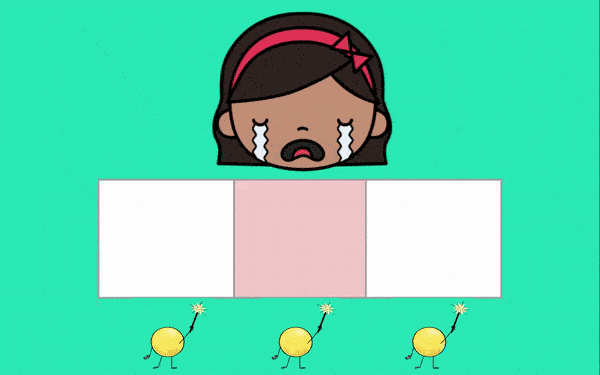Have you recently begun teaching short vowel CVC words to your students? Are you ready to introduce them to short O CVC words?
If you need engaging instructional ideas that are aligned with the science of reading, you’re in the right place.
In this post, I provide a convenient list of short O CVC words that you can use with your students in a variety of ways.
I also share several research-backed strategies that you can use to teach short O CVC words immediately.
Teachers and students find these explicit lessons enjoyable and effective, and I hope you do too!
What Does Short O Sound Like?
Before sharing a list of short O CVC words with you, I’d like to get into the details of the short O CVC pattern, especially the sound that the short O makes, in order for your kids to fully understand this skill.
In the spirit of explicit teaching, let’s explore how our students should shape their mouths when producing the short /o/ sound. This is the sound heard at the beginning of words such as octopus or ox, or in the middle of words such as mop or hot.
To make this sound, the mouth should be somewhat rounded with the lips forming a wide oval shape. There should be a moderate gap between the upper and lower teeth. The tongue should be positioned low in the mouth, away from the teeth and toward the back.
This distinct mouth formation will help your students articulate the short O sound.
What Is a Short O CVC Word?
When I teach short vowel CVC words, I typically teach short A, then short I, and followed by short O. I’ve also used programs in the past that presented short O before short I. Different programs vary in their scope and sequence and that’s okay. There isn’t one “official best” scope and sequence.
As you probably know, CVC is an acronym that stands for “constant-vowel-consonant”. I find it effective to get kids to label short O words with the actual CVC labels. This seems to help them internalize the pattern and remember it more easily.


It’s also important to help our kids understand that the V doesn’t stand for just any vowel, but a short vowel. So, for short O CVC words, the “V” stands for a “vowel that is a short O as in octopus”.
Short O CVC Word Lists
Let’s get into the short O CVC word lists!
Feel free to pick and choose which words you want to weave into your decoding and encoding lessons.
The focus of this list is to target strictly CVC words. You’ll notice that I left out words with consonant digraphs and blends.
| Short O CVC Word Family | Short O CVC Words Within Each Word Family |
|---|---|
| -ob | cob, job, mob, rob, sob |
| -od | bod, cod, nod, pod, rod, sod |
| -og | bog, dog, fog, hog, jog, log, nog, sog |
| -om | mom, pom, Tom |
| -on | con, Don, Ron |
| -op | cop, hop, mop, pop, sop, top |
| -ot | bot, cot, dot, got, hot, jot, lot, not, pot, rot, tot |
| -ox | box, fox, pox |


How Do You Teach the Short O Vowel in CVC Words?
Now, let’s look at some methods for teaching short O CVC words, in case you need fresh ideas.
Throughout the rest of this post, we’ll explore a collection of activities for teaching short O CVC words. Many of the ideas that you’ll see here are inspired by a digital resource that I created, CVC Word Practice for Short O Digital Slides.
These are no-prep slides that are ready to go for immediate classroom use. These slides are obviously not the only way to teach short O words, but they’re a convenient and comprehensive resource if you need a done-for-you lesson.
The ideas that I list here will hopefully give you inspiration of ways you can implement the same activities through non-digital methods if that’s your preference.
Use Photos, a Speech-to-Print Approach, and an Embedded Mnemonic to Introduce the Sound
One of the best ways I’ve found to introduce students to a new phoneme-grapheme correspondence is with a speech-to-print approach. This method is great for connecting something our brains are naturally wired for (speech) to something more abstract (printed letters).
If you want to try this method, start by choosing photos of objects that start with the short O sound. You can project images that you find online or hold up printed copies.
For example, you could say the word “otters”, and ask students to repeat the word. Then, repeat this process with 3-5 more words, showing photos if you have them.


As you’re doing this with your students, it’s a good idea to be intentional about mouth awareness during sound formation. You could do this by discussion, mirrors, or other visuals.


After students recognize that same short /o/ sound at the beginning of each word, you would introduce the printed letter O with a mnemonic like “octopus”.


Adding a gesture enhances engagement. For instance, model the act of waving your octopus arms and ask students to mimic you as they make the short o sound.
Need embedded mnemonics? You can get a free set here when you join our newsletter.
Optional Warm-Up Idea for Phonemic Awareness
Looking for ways to help your students manipulate sounds and words? We all have those students who need a little bit of something extra.
The following phonemic awareness activity can help your struggling students get better prepared with the basics. This will allow them to ease into the decoding and encoding of short O CVC words more comfortably, when the time comes.
Get your students engaged in some initial sound substitution, with or without the support of letters.
For example, say the word “cob” and have students hold up a finger for each sound they hear. They should say each sound as they hold up a finger.
Then ask your students to change that first sound, the /k/ (hard c) sound, to a /j/ sound. Ask them what new word that makes, and they should say “job.”
This is what that looks like with our digital slides.


You might notice here that there are letters on the individual dots.
The letters are there alongside the visuals to support the integration of phonemic awareness and phonics. However, the dots are EDITABLE should you wish to delete the letters.
Practice Decoding Short O CVC Words
Now that we’ve warmed up with some phonemic awareness, we can transition into teaching students how to decode words with the short O CVC pattern.
We want to encourage healthy decoding habits and prevent the bad habit of guessing at words. That’s why I designed these slides so that students must read the short O CVC word first, and they won’t see the picture of the word until you, the teacher, click to the next slide. The only picture they’ll see on the word slide is the embedded mnemonic of the octopus. I included the mnemonic because reading research supports this as the most efficient and effective way for students, especially at-risk learners, to master letter-sound relationships.


As you can see here in this example, the students are to blend each of the letter sounds into an individual word. Students will see the embedded mnemonic for the short vowel on the first ten decoding slides.
The following slide gives a picture of the right answer as reinforcement, but only after the kids have read the word from the previous slide on their own. This aligns with research on how to best support the development of independent decoding skills.
Encourage Accurate Reading by Introducing Nonexamples (or Nonsense Words)
Once your students are more familiar with and confident in reading short O CVC words, you can move on to see how well they’re able to distinguish real short O CVC words from nonsense words.
A sorting activity provides a nice way to do this. You can present students with a word that is either a real or a nonsense word. Students will have to determine (after they read it silently) what kind of word it is and sort it under the proper category. You can write a word on your whiteboard, and students will read it and then write in on a whiteboard or piece of paper under the appropriate column, real or nonsense.
In our slide set, we do this with fun slides where words appear under a flying saucer. The students have to read each word in their minds and decide if it’s real or nonsense.
If the word is real, it goes under the picture of the boy and remains on Earth with him. On the other hand, if it’s a nonsense word (some teachers refer to these as “alien words”), it will return with the alien.


You can foster additional understanding and oral language development by encouraging students to create sentences using the real words.
Short O CVC “I SPY” Phoneme Segmentation (or Blending) Game
Playing an “I Spy” game provides an engaging way to reinforce student learning and offers more phonemic awareness practice, either with blending or segmenting short O CVC words.
Students will have to exchange clues for a number of different short O CVC words found within a scene.
You, as the teacher, can guide them toward segmenting the words they find. For example, if they see a picture of a mop in this scene, they would say, “I spy a /m/… /o/… /p/.” Then, students will call out “mop”, after which you would drag a star over the mop.


Another way you could go about it is to give the clues yourself, and as you do so, you would be doing the segmenting and prompting the students to blend the sounds to identify the correct picture.
While doing this, it’s wise to model a few of the first choices. After that, make sure that students are doing most of the work for maximum learning.
Practice Encoding Short O CVC Words
Following solid structured literacy guidelines, we’ll make sure to get students to practice both decoding AND encoding.
Here’s a simple and fun spelling activity you can try. Make sure your kids have some writing materials handy, like a piece of paper and a pencil or a dry erase board and markers.
Begin by stating a CVC word with a short O sound, like “sob.” Ask students to “chop up the word” into its individual sounds.
With my digital slides, you’ll see a picture of “sob” and some empty boxes. This encourages the kids to produce a letter representing each sound. When you click on the slides, a pointer pops up for each sound as a support for phoneme segmentation.


Then students can write a letter for each sound, and you can click again to show them if their answers are correct. Remind students, if necessary, that mistakes help us learn!


There are 20 encoding slides included in the digital resource. I’ve included a visual of each word to support memory of what word students have to write. This is also helpful for English Language Learners and those students with limited vocabulary knowledge.
Fun Mystery Picture Reveal Behind Short O CVC Word Chains
During distance learning, I thought of this idea to make reading word chains more motivating. I typed the words into boxes, and I inserted a background image behind the boxes. After students read a word correctly, I clicked for the box to disappear. Word by word, a “mystery picture” revealed itself. This has become my students most requested activity! I’ve included four of these mystery picture word chains in my short O CVC slides.
By word chain, I mean that the words are listed in such an order that there’s only one sound change from one word to the next. This trains students to pay attention to the smallest differences in words and discourages guessing!
Behind all of the words is a mystery picture of something with a short O CVC pattern. It’s always fun to have students guess what mystery picture is behind the words before getting started.
You can set the pace by using your spacebar or clicking your mouse to progress students from one word to the next. This format encourages students to improve their reading accuracy and fluency!
Read Short O CVC Word Decodable Sentences
As you may have noticed, many packaged programs fall short in the sentence department. While they might provide ample words for decoding and encoding at the word level, the sentences included, if at all, tend to be minimal, awkward, or both.
For this reason I started creating my own decodable sentences. I tried to make the sentences meaningful and relatable to kids, with natural-sounding language. You won’t find anything like “Kim did nip six figs” or “Kip did a jig” here!
Before presenting any decodable sentences, just make sure that your kids are familiar with any “heart words” (irregular sight words) that will appear in the sentences.


You can write the sentences in advance on sentence strips, or you can type them up and project them onto your screen.
Alternatively, you can use the digital slides shown below.
If using the slides, these sentences pop up one word at a time. You can set a suitable reading pace as you click for each word to appear.
After the entire sentence is shown, ask if your students can visualize a mental image that would match the sentence.
Then you can display the picture. This is done for you on our digital slides. Students can compare their mental image with what’s displayed on the screen.


As an added bonus, some of the slides feature scooping under the phrases. This helps students practice proper phrasing so they’re reading the words with more of a natural flow as opposed to a choppy manner.


If you’re not using the slides, you can easily do this with a pointer on your pocket chart or with a marker on your board.
If you’re using the slides, there are eight decodable sentence slides available for you.
Incorporate Sentence Dictation Lessons with Short O CVC Words
Just as most programs lack enough sentences for our students to read, sentence dictation opportunities are often limited as well. Even when a few sentences are provided, most don’t provide a visual to anchor the sentence in students’ memory.
I created slides to support students in the sentence writing process. These supports include blank boxes to help students segment the sentence into individual words, as well as a picture to help recall of the sentence. These supports are especially helpful for students with working memory challenges.
To start my sentence dictation routine, I ask students to put their fists in the air. I call out the sentence and ask them to repeat it, holding up a finger for each word they say.
If I’m using the slides, I click for each box to appear as students chorally repeat the sentence.


Direct your students to write each word of the sentence on their dry-erase board or paper. Once students have written their sentence, I ask them to point to each word they’ve written as they read their sentence back to me. Finally, I reveal the correct spelling and ask students to check and fix any mistakes.


Want some additional sentence dictation prompts featuring short O CVC words and engaging real photographs? Check out this resource that has a wide selection of sentences along with interesting real photos! This set comes in both digital and printable format.
Your Students Are Ready for Success!
With the word lists and ideas shared here, I hope you’ve gotten some fresh inspiration to add to your short O CVC lessons.
I would also love to save you time and effort if you decide to use this complete structured literacy lesson for short O CVC words. Here’s how you can access this affordable digital resource. Simply click on this link or on the image below:


If you need even more short O CVC practice opportunities for your students, whether it be for whole group, small group, partner, or independent work, please check out the following resources:
- This no-prep digital lesson with real photos. I’d recommend this for older students who might find the clipart above too juvenile.
- Self-Checking CVC Cards with real photos and an embedded mnemonic for the short o. Great for partner work or centers!
- Short O CVC Worksheets for at-home reinforcement or engaging independent work.
And finally, if you think the slides shown throughout this article will benefit your students, please know that you can get a bundle of similar resources for Short A, I, U, and E CVC Words at a discount.
Regardless of which materials or resources you use, I’m sure your teaching will bring out the best in your students. I wish you and your students much success and enjoyment with your literacy lessons!

